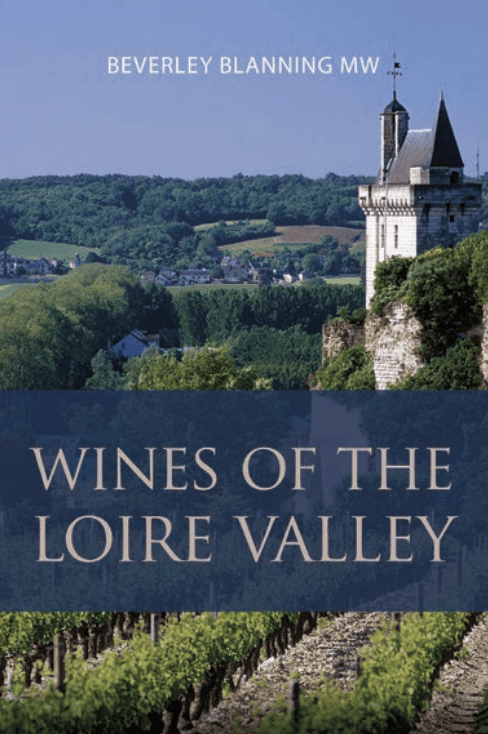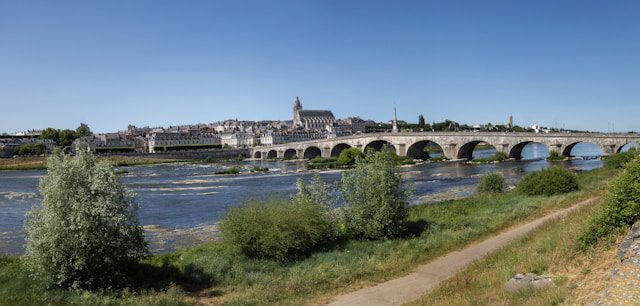Robert Smyth reviews the new tome on the wines of the Loire, written by Beverley Blanning MW.
The time feels right for a book on the plethora of wines that are made alongside and in the vicinity of the courses of France’s longest river. Indeed, The Wines of the Loire Valley by Beverly Blanning MW arrives at a time when this once unfashionable backwater of the wine world has once again become firmly in focus.
The preface is a perfectly pitched mise en bouche that whets the palate by highlighting the upturn in the wines of the Loire Valley, which made me want to devour the main meal. Blanning starts off by cleverly mentioning comments from others on how Loire wines are now perceived, such as Le Figero declaring “Muscadet is the new Montrachet”.
The Wines of the Loire Valley follows the tried, trusted and highly logical formula of: history (which dates back some 2,000 years); the growing environment; wine styles, appellations and grape varieties; and region profiles, including recommended producers, along with recommendations on where to stay and on places to eat and drink.
Even though it’s not the kind of book that’s designed to be read from cover to cover, the text flows effortlessly like the great river itself. It is written in a really engaging style, for example, she describes Anjou as “a contradictory place, simultaneously the most and least interesting region of the Loire Valley.” It is easy to dip in and out of, with the layout clear and easy to follow. I also found it packed with both key facts and nuggets of information, constructed with an excellent choice and use of sources, as well as considered opinion from the author herself. For instance, on the question of the new classification of the white wines of Saumur, where white wines from certain ‘crus’ with tuffeau subsoil were identified a century ago by Paul Maisonneuve as being particularly special and producers are now lobbying for a new classification, she says: “Tasting the few white wines made from these sites today, it is clear that Maisonneuve was not wrong: there are some stunning whites produced here.” I also liked the commentary on how growers in Quarts de Chaume are seeking to use their grand cru appellation not only for sweet wines (as is currently permitted), but also for dry white wines.
Not only does Blanning tackle contemporary issues head-on with insightful commentary, she also provides cultural background that helps the reader appreciate more than just the wine, such as when the author and physician Rabelais is introduced as the most famous son of Chinon. Nevertheless, he also praised its wines in his fictional tales. On the subject of Chinon Cabernet Franc wines, she says,” [they] can be among the most structured and long-lived of the Loire, although it is perhaps their succulence that ranks highest among their appeal. Good producers are reining back on oak and tannin-extraction to produce attractive wines that don’t demand patience to be enjoyed.”
Regarding the growing environment, Blanning observes that the Loire Valley, on the whole, is one of the winners of climate change. The section on Climate and Weather in the Growing Environment chapter observes how much of the Loire Valley has benefited, though it notes that unpredictability is an issue here as it is elsewhere. “The Loire has, in many respects, experienced positive effects from warmer vintages. This far north, additional heat and sun during the growing season can be beneficial for ripening wine grapes”. However, it is not good news for everyone in this extremely diverse region. She adds that, “leading Pouilly Fumé producer Louis-Benjamin Dagueneau was quoted as saying that since the warm 2018 vintage, ‘we are reaching the limits of the Sauvignon Blanc grape variety.’”
Nevertheless, she points to recent figures for vineyard transactions that reveal “the Loire is bucking the trend across France for declining land prices… The Loire offers the flexibility of a cooler climate that is ideal for the production of more refreshing styles of any hue. These wines are becoming both harder to find and more highly demanded by consumers.” Blanning also looks to the new grapes of the future in the part on grape varieties, although she asserts that “Chenin is the Loire’s still-underrated trump card for white wines, being both its most versatile and arguably its most noble variety.”
Incidentally, going back in time and preceding this in the history chapter, a box on the ‘Loire’s history of climate change’, recalls that the Loire’s vineyards developed during the so-called ‘Medieval Warm Period’, when temperatures were so much warmer than today.
Blanning, who has been visiting the Loire Valley for over 25 years, observes that within France, the Loire is one of the most important regions for organic viticulture. “In the decade from 2011 to 2021, the area of vineyards farmed organically here rose by nearly 300 per cent and now accounts for 23 per cent of the total land area.” This is significantly higher than the French national average of 14 per cent. This has been factored into Blanning’s coverage, and accordingly, 80 per cent of the producers profiled in the book are certified organic. In the section on Savennières, in the Anjou chapter, where “Nicolas Joly, owner of La Coulée de Serrant, is probably the French vigneron best known for his vigorous promotion of the virtues of biodynamic viticulture, 80 per cent of wine growers in Savennières are, in any case, organic,” Blanning observes. I also very much enjoyed her measured discussion in a box on the natural wine debate.
Overall, this timely tome, of 352 pages, starting the regional coverage with the ‘Ocean wines’ of Nantais and ending with the Mountain wines of Auvergne, followed by a vintage guide from 2004-2024, is everything I was looking and more. It provides in-depth coverage with nothing obvious to criticise (ok, perhaps the pictures alternating between black and white and colour, may bother some people). It has really helped me navigate the many treacherous twists and turns and choppy waters of one of the world’s more complicated wine regions. It is ideal for wine lovers and professionals alike. I heartily recommend it as essential reading on this dynamic, diverse and deep region.
 Wines of the Loire Valley by Beverley Blanning MW is published by the Académie du Vin Library as part of the Classic Wine Library.
Wines of the Loire Valley by Beverley Blanning MW is published by the Académie du Vin Library as part of the Classic Wine Library.
It is £35. Members can access special discounts on Académie du Vin Library’s titles by accessing the Benefits page.

